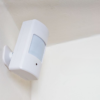The rapid advancements in technology have transformed the way we interact with our homes. The growing demand for smart home devices, from intelligent lighting and climate control to security systems and home appliances, has led to the emergence of smart home hubs as the central control and integration point for these diverse technologies. As the smart home ecosystem continues to expand, the importance of choosing the right smart home hub has become increasingly crucial. This article will provide a comprehensive comparison between two prominent smart home hubs: the Tuya Zigbee Gateway and the Philips Hue Bridge, to help consumers make an informed decision in 2024.
The growing demand for smart home technology is driven by the desire for increased convenience, energy efficiency, and enhanced security. Homeowners are seeking solutions that can seamlessly integrate and manage a wide range of smart devices, from lighting and thermostats to security cameras and voice assistants. The smart home hub plays a pivotal role in this ecosystem, serving as the central control point that enables users to monitor, automate, and optimize their home environment with ease. The choice of the right smart home hub can significantly impact the overall user experience, device compatibility, and the level of integration and automation achievable within the smart home.
Key Takeaways
- Smart home hubs are becoming increasingly popular as more devices become connected and automated.
- The Tuya Zigbee Gateway offers a comprehensive overview of features and capabilities, making it a strong contender in the smart home hub market.
- The Philips Hue Bridge, as an established player, has a strong reputation and a wide range of compatibility and device support.
- Ease of installation and setup is an important factor to consider when choosing a smart home hub, and both the Tuya Zigbee Gateway and Philips Hue Bridge offer user-friendly experiences.
- When choosing the best smart home hub for 2024, consider factors such as smart home integration, voice assistant integration, and security and privacy considerations to make an informed decision.
Tuya Zigbee Gateway: A Comprehensive Overview
While Tuya itself doesn’t manufacture hardware, it provides a smart home platform (Tuya Smart) that many manufacturers leverage to create their own Zigbee-compatible gateways. These gateways come under various brands like Zemismart, Moes, and Lumive. Each manufacturer utilizes their own hardware design and product aesthetics, but they all rely on the Tuya ecosystem as a software layer. This allows them to seamlessly connect and integrate with other devices that also use Tuya Cloud.
Tuya, a leading provider of IoT (Internet of Things) solutions, has established a strong presence in the smart home market with its Zigbee Gateway. Tuya’s background as a global IoT platform and its expertise in developing smart home technologies have positioned the Tuya Zigbee Gateway as a compelling option for homeowners seeking a versatile and affordable smart home hub.
The Tuya Zigbee Gateway is designed to support the Zigbee wireless protocol, a widely adopted standard in the smart home industry. This protocol enables the gateway to seamlessly connect and control a wide range of Zigbee-enabled devices, including smart lights, sensors, switches, and various home appliances. The gateway’s support for Zigbee allows for a robust and reliable wireless network within the home, ensuring efficient communication between connected devices.
One of the key advantages of the Tuya Zigbee Gateway is its affordability. Compared to some of the premium smart home hubs on the market, the Tuya Zigbee Gateway offers a cost-effective solution for homeowners looking to build or expand their smart home ecosystem. Additionally, the gateway’s compatibility with a diverse range of Zigbee-compatible devices, including those from various manufacturers, provides users with a wide selection of smart home products to choose from, allowing them to tailor their smart home setup to their specific needs and preferences.
While the Tuya Zigbee Gateway offers a compelling set of features and capabilities, it’s important to consider potential drawbacks or limitations. The gateway’s reliance on the Tuya ecosystem and its associated mobile app may raise concerns for some users who prefer more open-source or vendor-neutral smart home platforms. Additionally, the gateway’s integration with third-party smart home platforms and voice assistants may not be as seamless or comprehensive as some of its competitors, potentially limiting the overall flexibility and customization options for advanced users.

Philips Hue Bridge: The Established Player
Philips, a renowned brand in the lighting industry, has long been a pioneer in the smart home market with its Hue ecosystem. The Philips Hue Bridge, a central component of the Hue system, has established itself as a trusted and reliable smart home hub, particularly for those focused on smart lighting solutions.
Philips Hue’s history and reputation in the smart lighting industry have contributed to the Hue Bridge’s strong market position. The bridge seamlessly integrates with the extensive Hue product line, including smart light bulbs, fixtures, and accessories, providing users with a comprehensive and cohesive smart lighting experience. The Hue Bridge’s design and integration with the Hue mobile app and ecosystem offer a user-friendly and intuitive interface for controlling and customizing the lighting in the home.
One of the key strengths of the Philips Hue Bridge is its seamless integration with the Hue ecosystem. Users who have invested in Hue products can enjoy a highly streamlined and optimized smart home experience, with the bridge serving as the central hub for managing and automating their lighting setup. The bridge’s compatibility with popular voice assistants, such as Amazon Alexa and Google Assistant, further enhances the user experience by enabling voice-controlled lighting commands.
While the Philips Hue Bridge excels in its integration with Hue products, its compatibility with non-Hue smart home devices may be more limited. Users who wish to integrate a broader range of smart home devices, beyond just lighting, may find the Hue Bridge’s capabilities to be more restrictive compared to more versatile smart home hubs. This could be a consideration for homeowners seeking a more comprehensive smart home solution that can manage a diverse array of connected devices.

SmartThings Hub
Unlike Tuya, which focuses on facilitating various manufacturers, SmartThings is a brand owned by Samsung that offers its own line of smart home products, including the SmartThings Hub. This hub acts as the central control point for the SmartThings ecosystem and boasts compatibility with a wide range of smart home devices from numerous brands.
Similar to Tuya, SmartThings utilizes a Zigbee protocol alongside other wireless technologies like Z-Wave and Wi-Fi to connect and manage a diverse array of smart home devices. This opens up a vast selection of compatible products for users seeking a versatile smart home solution.
Here’s why including SmartThings is valuable for your comparison:
Provides a well-rounded perspective: Highlighting both platform-based solutions (Tuya) and brand-specific hubs (SmartThings) offers readers a broader understanding of smart home hub options.
Caters to a wider audience: Some users may prioritize brand recognition and a unified ecosystem (SmartThings), while others may value platform flexibility and affordability (Tuya).
Compatibility and Device Support
When it comes to smart home hubs, the breadth and diversity of device compatibility are crucial factors to consider. The Tuya Zigbee Gateway and the Philips Hue Bridge offer different levels of device support, catering to the varying needs and preferences of homeowners.
The Tuya Zigbee Gateway, with its Zigbee protocol support, is designed to work with a wide range of Zigbee-enabled devices from various manufacturers. This includes smart lights, sensors, switches, and a variety of home appliances, providing users with a diverse selection of compatible products to choose from. The gateway’s ability to integrate with a broad ecosystem of Zigbee devices can be particularly appealing for those who seek a more open and flexible smart home setup.
In contrast, the Philips Hue Bridge is primarily focused on the Hue ecosystem, offering seamless integration with Philips Hue smart lighting products. While the Hue Bridge can also connect with some third-party devices that are compatible with the Hue platform, its device support is more limited compared to the Tuya Zigbee Gateway. This may be a consideration for homeowners who require a more comprehensive smart home solution that can manage a diverse range of devices beyond just lighting.
The implications of device compatibility on the overall smart home experience can be significant. Homeowners who prioritize a wide range of device integration may find the Tuya Zigbee Gateway to be a more suitable option, as it offers greater flexibility in connecting and controlling various smart home products. Conversely, those who are primarily focused on smart lighting and are invested in the Philips Hue ecosystem may find the Hue Bridge to be the more optimal choice, providing a more streamlined and cohesive lighting management experience.
It’s important to note that while the Tuya Zigbee Gateway and the Philips Hue Bridge have their respective strengths in device compatibility, there may be limitations or challenges in integrating certain devices with each smart home hub. Homeowners should carefully research and evaluate the specific device requirements and compatibility of each smart home hub to ensure that it aligns with their smart home needs and preferences.
Ease of Installation and Setup
| Metrics | Tuya Zigbee Gateway | Philips Hue Bridge |
|---|---|---|
| Compatibility | Works with Tuya smart devices and other Zigbee products | Compatible with Philips Hue smart lights and accessories |
| Connectivity | Supports Zigbee and Wi-Fi connectivity | Connects via Ethernet and supports Zigbee protocol |
| Control | Can control multiple smart devices through Tuya app | Provides seamless control of Philips Hue lights and scenes |
| Price | Relatively affordable | Higher price point |
| Brand Ecosystem | Part of the Tuya smart home ecosystem | Part of the Philips Hue smart lighting ecosystem |
The ease of installation and setup is a crucial factor when it comes to smart home hubs, as it can significantly impact the overall user experience and the adoption of smart home technologies within the household.
The Tuya Zigbee Gateway is generally regarded as a user-friendly and straightforward smart home hub to set up. The gateway’s setup process typically involves connecting the device to the home’s Wi-Fi network, downloading the Tuya mobile app, and pairing the gateway with the desired Zigbee-enabled devices. The Tuya app provides clear instructions and guidance throughout the setup process, making it accessible for users with varying levels of technical expertise.
In comparison, the Philips Hue Bridge also offers a relatively simple and streamlined installation experience. The bridge’s setup involves connecting it to the home’s router and then pairing it with the Hue mobile app. The Hue app provides step-by-step guidance, making the process intuitive and straightforward for users. However, the Hue Bridge’s integration with the broader Hue ecosystem may require additional setup and configuration for users who are new to the Hue platform.
When considering the time and effort required to get each smart home hub up and running, the Tuya Zigbee Gateway and the Philips Hue Bridge generally offer a comparable level of ease. Both hubs can typically be set up within a matter of minutes, with the Tuya Zigbee Gateway potentially requiring slightly less technical expertise for users who are new to smart home technologies.
It’s important to note that the learning curve and technical expertise needed for each smart home hub may vary depending on the user’s familiarity with smart home systems and their specific requirements. While the Tuya Zigbee Gateway and the Philips Hue Bridge are designed to be user-friendly, more advanced users or those with complex smart home setups may need to invest more time and effort in configuring and customizing the hubs to meet their specific needs.
Smart Home Integration and Automation
The ability to seamlessly integrate a smart home hub with various smart home platforms and the level of automation it offers are crucial factors in determining the overall user experience and the flexibility of the smart home setup.
The Tuya Zigbee Gateway’s integration capabilities extend beyond the Tuya ecosystem, allowing users to connect it with popular smart home platforms such as Amazon Alexa, Google Assistant, and Apple HomeKit. This integration enables users to control and automate their smart home devices through voice commands, mobile apps, and even third-party smart home automation platforms. The Tuya Zigbee Gateway’s open-source nature and its support for various protocols, including Zigbee, Wi-Fi, and Bluetooth, contribute to its versatility and integration potential.
On the other hand, the Philips Hue Bridge is primarily focused on the Hue ecosystem, offering seamless integration with Philips Hue products and compatible third-party devices. The Hue Bridge’s integration with voice assistants like Amazon Alexa and Google Assistant allows users to control their Hue lighting through voice commands. However, the Hue Bridge’s integration with other smart home platforms may be more limited compared to the Tuya Zigbee Gateway, potentially restricting the overall automation and customization options for users with diverse smart home setups.
When it comes to automation features and customization options, both the Tuya Zigbee Gateway and the Philips Hue Bridge offer a range of capabilities. The Tuya Zigbee Gateway, with its support for various smart home protocols, allows users to create complex automation routines, schedules, and scenes, catering to a wide range of smart home needs. The Philips Hue Bridge, on the other hand, excels in lighting-specific automation, enabling users to create personalized lighting schedules, scenes, and even integrate with other smart home devices for enhanced lighting control and automation.
The overall user experience and the flexibility in creating automated routines can be a significant factor in determining the optimal smart home hub for individual homeowners. Users who require a more comprehensive and versatile smart home solution may find the Tuya Zigbee Gateway to be a better fit, while those primarily focused on smart lighting may prefer the Philips Hue Bridge’s specialized features and integration with the Hue ecosystem.
Voice Assistant Integration
The integration of smart home hubs with voice assistants has become increasingly important in the modern smart home landscape, as it allows for seamless and intuitive control of connected devices through voice commands.
The Tuya Zigbee Gateway offers integration with popular voice assistants such as Amazon Alexa and Google Assistant. This integration enables users to control their Zigbee-enabled devices, including smart lights, switches, and sensors, using voice commands. The Tuya Zigbee Gateway’s compatibility with these voice platforms provides users with a convenient and hands-free way to manage their smart home, enhancing the overall user experience.
Similarly, the Philips Hue Bridge also integrates with Amazon Alexa and Google Assistant, allowing users to control their Hue lighting through voice commands. The Hue Bridge’s seamless integration with the Hue ecosystem ensures a cohesive and responsive voice control experience for Hue product owners.
When comparing the voice command capabilities and user experience between the Tuya Zigbee Gateway and the Philips Hue Bridge, both hubs offer reliable and responsive voice control. Users can expect to perform a range of voice-activated tasks, such as turning lights on and off, adjusting brightness levels, and setting lighting scenes or schedules.
The importance of voice control in the modern smart home landscape cannot be overstated. As homeowners increasingly rely on voice assistants to manage their connected devices, the integration and performance of smart home hubs with these platforms can significantly impact the overall user experience and the adoption of smart home technologies within the household.
Security and Privacy Considerations
As smart home technologies continue to proliferate, the security and privacy of user data have become paramount concerns for homeowners. When evaluating smart home hubs, it is essential to consider the measures taken by manufacturers to ensure the protection of user information and the security of connected devices.
The Tuya Zigbee Gateway, as part of the Tuya ecosystem, has implemented various security protocols and data privacy measures to address these concerns. The gateway utilizes encryption and authentication mechanisms to secure the communication between connected devices and the Tuya cloud platform. Additionally, Tuya provides users with the ability to control their data privacy settings, allowing them to manage the information shared with the Tuya ecosystem.
Similarly, the Philips Hue Bridge also prioritizes security and privacy within the Hue ecosystem. The bridge employs encryption and authentication methods to safeguard the communication between Hue devices and the Hue cloud. Philips also provides users with the option to control their data privacy settings, enabling them to manage the information shared with the Hue platform.
When comparing the overall security and privacy implications of the Tuya Zigbee Gateway and the Philips Hue Bridge, both hubs have taken steps to address these critical concerns. However, as with any smart home technology, it is essential for users to carefully review the security and privacy policies of the respective manufacturers and to stay informed about the latest developments in the field of smart home security.
Ultimately, the security and privacy considerations of a smart home hub can have a significant impact on the overall user experience and the level of trust placed in the technology. Homeowners should carefully evaluate the security measures and data handling practices of each smart home hub to ensure the protection of their personal information and the security of their connected devices.
Choosing the Best Smart Home Hub for 2024
As the smart home market continues to evolve, the choice of the optimal smart home hub has become a crucial decision for homeowners in 2024. The Tuya Zigbee Gateway and the Philips Hue Bridge, two prominent players in the smart home hub landscape, offer distinct advantages and considerations for consumers.
The Tuya Zigbee Gateway’s strengths lie in its broad device compatibility, affordability, and versatile integration capabilities with various smart home platforms and voice assistants. Its support for the Zigbee protocol allows for a robust and reliable wireless network, enabling seamless control and automation of a diverse range of smart home devices. However, the Tuya Zigbee Gateway’s reliance on the Tuya ecosystem and potential limitations in third-party integration may be a consideration for some users.
On the other hand, the Philips Hue Bridge excels in its seamless integration with the Hue ecosystem, providing a cohesive and optimized smart lighting experience. The bridge’s design and user-friendly interface, combined with its compatibility with voice assistants, make it a compelling choice for homeowners focused on smart lighting solutions. Nevertheless, the Hue Bridge’s more limited device compatibility beyond the Hue ecosystem may be a drawback for those seeking a more comprehensive smart home solution.
When considering the key factors, such as device compatibility, ease of installation, smart home integration, voice assistant integration, and security/privacy, both the Tuya Zigbee Gateway and the Philips Hue Bridge offer compelling features and capabilities. The optimal choice will ultimately depend on the individual homeowner’s specific needs, preferences, and the overall smart home ecosystem they aim to build.
For homeowners in 2024 who prioritize a versatile and open-source smart home solution, the Tuya Zigbee Gateway may be the preferred choice, offering a broader range of device compatibility and integration options. Conversely, for those primarily focused on smart lighting and invested in the Philips Hue ecosystem, the Hue Bridge may be the more suitable option, providing a streamlined and optimized lighting management experience.
Regardless of the choice, it is essential for homeowners to carefully evaluate their smart home requirements, research the latest developments in the market, and make an informed decision that aligns with their long-term smart home goals. The evolving smart home landscape and the continuous advancements in technology will undoubtedly shape the future of smart home hubs, and staying informed and adaptable will be key to ensuring a seamless and future-proof smart home experience.
FAQs
What is a smart home hub?
A smart home hub is a central device that connects and controls various smart home devices, such as lights, thermostats, and security cameras, using a single interface.
What is Tuya Zigbee Gateway?
Tuya Zigbee Gateway is a smart home hub that uses the Zigbee wireless protocol to connect and control compatible smart home devices. It is designed to work with Tuya’s ecosystem of smart home products, Since Tuya doesn’t manufacture hardware, You will find multiple brands using the term Tuya ZigBee Gateway
What is Philips Hue Bridge?
Philips Hue Bridge is a smart home hub specifically designed to control Philips Hue smart lighting products. It uses the Zigbee wireless protocol to communicate with and control Philips Hue lights.
What are the key differences between Tuya Zigbee Gateway and Philips Hue Bridge?
Tuya Zigbee Gateway is designed to work with a wide range of smart home devices from various brands, while Philips Hue Bridge is specifically tailored to control Philips Hue smart lighting products. Additionally, Tuya Zigbee Gateway may offer a broader compatibility with third-party devices, while Philips Hue Bridge may provide a more seamless experience with Philips Hue lights.
Which smart home hub is better for 2024: Tuya Zigbee Gateway or Philips Hue Bridge?
The choice between Tuya Zigbee Gateway and Philips Hue Bridge depends on the specific smart home devices you plan to use. If you have a variety of smart home devices from different brands, Tuya Zigbee Gateway may offer more flexibility. However, if you primarily use Philips Hue smart lighting products, Philips Hue Bridge may provide a more integrated and reliable experience.









